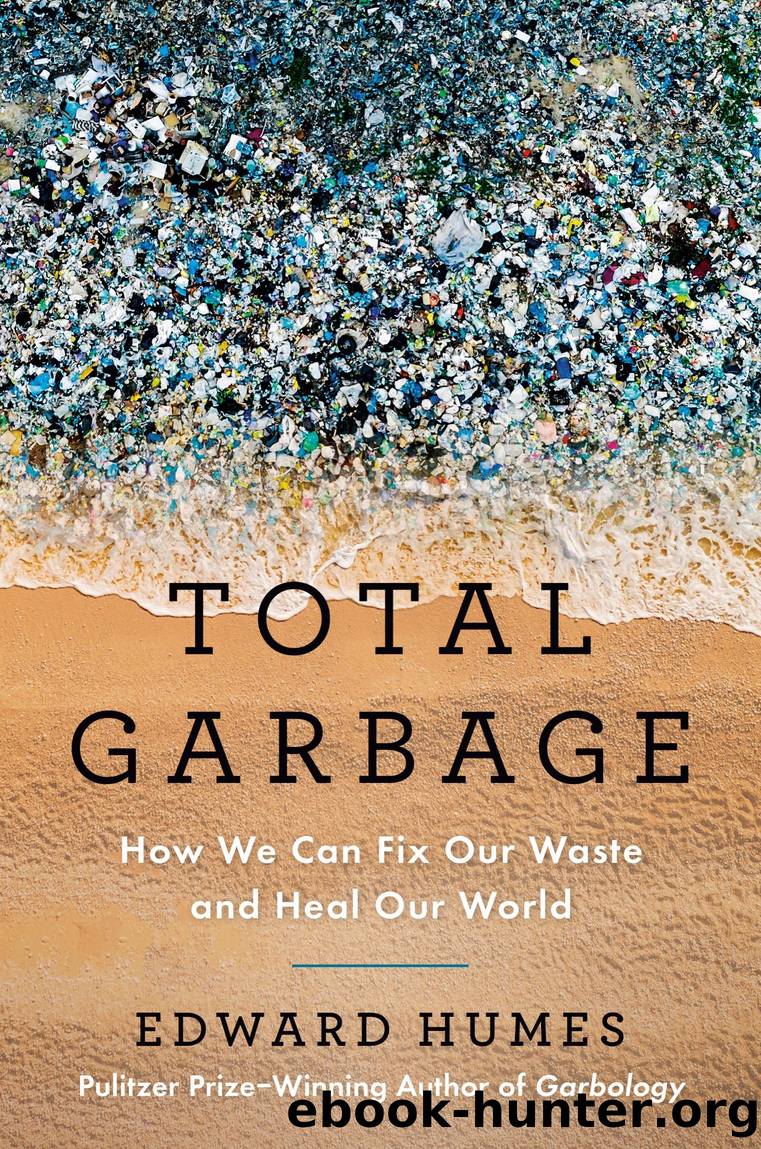Total Garbage by Edward Humes

Author:Edward Humes [Humes, Edward]
Language: eng
Format: epub
Publisher: Penguin Publishing Group
Published: 2024-04-02T00:00:00+00:00
Source: Our World in Data, International Renewable Energy Agency, ourworldindata.org/grapher/levelized-cost-of-energy. Note: Data expressed in constant 2021 US dollars
This is why many states and whole countries elsewhere in the world have set ambitious goals to decarbonize their electricity through solar and wind expansion, with California required by state law to have a green grid by 2035 and only electric cars for sale by 2030. The economics are so good for renewables now that a truly astonishing number of utility-scale, investor-backed projects are ready to roll: 2,000 gigawatts of solar, wind, and energy storage proposed all over America. The number is astonishing because the nation currently generates only 1,200 gigawatts from all energy sources combined (and only 300 of those gigawatts are renewable). So this would be the upgrade of all upgrades, enough juice to electrify everything renewably twice over.
This renewable investment avalanche shows where the money and opportunity are at now in the energy business, but there is a downside. This unprecedented number of projects has created a backlog in the approval process, with a delay of four years or more. Part of the slowness is dysfunctional bureaucracy, but a lot of it is due to the limitations of the electrical grid itselfâthe three regional networks of wires, transformers, and transmission towers that carry electricity around the country. Americaâs grid is a bit of a laughingstock to the rest of the developed world: aging, inefficient, fragmented into three separately governed and rarely cooperative entities, increasingly subject to blackouts, and long overdue for an upgrade. Most of this vital infrastructure hasnât been new since the 1990s or before; parts of the grid date back to the Kennedy administration. It simply could not handle all the proposed new renewable power if all the projects were quickly approved, nor could it efficiently move all that green electricity from places with large solar and wind resources to areas that lack them. In 2022 the federal government launched a $20 billion grid modernization program to begin tackling this critical problemâwhich hampers the movement and reliability of all forms of electricity, not just renewables.
Even with massive investment in renewable power and the grid, switching to a carbon-free and nonpolluting power system is a monumental task. It requires pushing out the most entrenched and powerful industrial incumbent in history, along with all the investments and jobs tied up in the fossil fuel business. But itâs by no means impossible. The average American power plant is thirty years old and not getting any younger, so itâs not like weâd be tossing out something new and shiny. We have a long history of tossing aside similarly entrenched incumbents, things for which we also had habitual and even sentimental attachment. We replaced horses with cars early in the twentieth century in a relative blink of an eye, killing millions of jobs and an entire economic ecosystem of breeders, ranchers, trainers, dealers, stables, saddle makers, blacksmiths, buggy and wagon manufacturers, feed growers, and veterinarians. Building the interstate highway system upended the
Download
This site does not store any files on its server. We only index and link to content provided by other sites. Please contact the content providers to delete copyright contents if any and email us, we'll remove relevant links or contents immediately.
Man-made Catastrophes and Risk Information Concealment by Dmitry Chernov & Didier Sornette(5956)
The Revenge of Geography: What the Map Tells Us About Coming Conflicts and the Battle Against Fate by Kaplan Robert D(4052)
Zero Waste Home by Bea Johnson(3804)
COSMOS by Carl Sagan(3588)
Good by S. Walden(3519)
In a Sunburned Country by Bill Bryson(3506)
The Fate of Rome: Climate, Disease, and the End of an Empire (The Princeton History of the Ancient World) by Kyle Harper(3030)
A Wilder Time by William E. Glassley(2835)
Camino Island by John Grisham(2778)
Organic Mushroom Farming and Mycoremediation by Tradd Cotter(2661)
The Ogre by Doug Scott(2657)
Human Dynamics Research in Smart and Connected Communities by Shih-Lung Shaw & Daniel Sui(2479)
Energy Myths and Realities by Vaclav Smil(2463)
The Traveler's Gift by Andy Andrews(2435)
9781803241661-PYTHON FOR ARCGIS PRO by Unknown(2342)
Inside the Middle East by Avi Melamed(2325)
Birds of New Guinea by Pratt Thane K.; Beehler Bruce M.; Anderton John C(2236)
A History of Warfare by John Keegan(2212)
And the Band Played On by Randy Shilts(2165)
